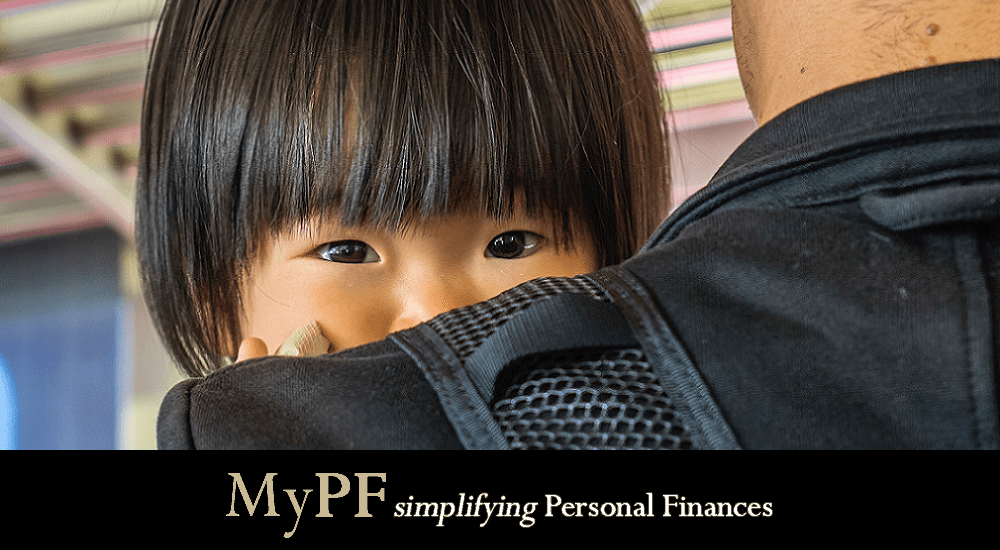A healthy financial life for your child includes risk management in the form of insurance. Here are several types to consider getting depending on your child’s needs covering health, life, pre-natal, special needs coverage, and education needs.
When dealing with personal money management and personal finance whether in Malaysia or other parts of the world, having to raise kids can bring certain things into focus. For example, children need daily checkups and medical treatment.
Our kids are precious, and at the very start of their lives with so much to look forward to, which is why insurance is often a prominent topic of discussion for many parents.
The thought has most certainly crossed the minds of young, first-time parents. Some of them may be preparing at this moment for an insurance plan for their little ones, while others aren’t completely sure about where to start.
Let’s delve a little deeper into the different types of insurance options for kids, and which ones should be considered priorities.
Contents
Insurance #1 & 2. Health & Life Insurance
Considered the most important (and most obvious) type of insurance by parents, health insurance can provide coverage for all the usual aspects such as medical costs, hospitalization costs and worse case scenarios like critical illness or disabilities. Health insurance provides preventive treatment, such as regular check-ins and examinations, alongside compensation for diseases and accidents.
It can get a little tricky trying to choose between the seemingly endless types of health insurance policies. Depending on the company or agent, you can expect a whole host of plans with varying features and premiums.
Arguably, one of the best options would be a life insurance policy that includes medical coverage as a rider. The term rider simply means that the policy can “ride” on the existing policy, which leads to higher coverage amounts for your child. Although premiums are higher, in the long term it’s cost-saving when compared to other standalone medical coverage plans.
There are several benefits to subscribing for medical coverage with the added rider component. For one, there are payer waivers which means that premiums won’t need to be paid if the payer dies. It usually also comes with better medical coverage plans or more extensive coverage. What’s more, life insurance policies can also include an investment or savings component which allows subscribers to enjoy added cash incentives.
Of course, it’s up to you as a guardian to choose between the many types of plans out there. As a general rule of thumb, premiums go up the more features are included in the plan.
Premiums are lower for basic plans without additional features. Young and active individuals need lesser coverage than individuals with families, elderly people, or people with chronic health conditions. Consider finding a package that has a low deductible and copays if you think you’re going to use your policy regularly.
Evaluate and decide on your budget and what you can afford. Note that there are often lower premiums for plans with higher copays and deductibles, while plans with high premiums typically have lower copays and deductibles.
Retirement savings, pension amounts and even social security insurance may be negatively affected for caregivers who have given up professional growth to provide care for a child with special needs. A life insurance policy on the life of the child will help to replace the lost earnings and retirement accounts of the caregiver if the death of the child occurs. In most cases, insurance proceeds will be charged to the appointed beneficiaries free of any income tax when the insured person dies.
Getting a life insurance policy will help cover funeral costs and make up for missed income opportunities, but it is not easy to think about. You should know more about the method of buying a policy and the available choices before you buy life insurance on a disabled child. You are doing what you can to safeguard your children and their future, including their financial well-being. This is why life insurance is so important, even at a young age.
Insurance #3. Prenatal Insurance
You may or may not be surprised to know that insurance protection for your child can begin even before his or her birth. Quite a few new parents are unaware of this type of insurance, which means that they are possibly missing out on some added protection during the pregnancy period.
Pregnant moms are able to sign up for the prenatal insurance option as early as 18 weeks into their term. Essentially, this policy helps as a form of financial protection in the event of unforeseen circumstances. For the most part, prenatal plans allow for the issuing of a lump sum of cash if subscribers experience complications with pregnancy or other problems like congenital diseases after the child is born. More parents should know about this, especially since the pregnancy phase is such an unpredictable time during which anything can happen.
What’s more, prenatal insurance often includes other perks like hospital care benefits in case of hospitalization. Again, there is a diverse range of different types of plans, preferences, features and premiums and are determined by the specific insurance provider you choose. Limits for claims and coverage amounts vary.
Prenatal insurance plans are in the interest of both the customer and the insurance company because insurance providers usually offer this option as a way to get ahead of the competition by hopefully transitioning new customers into the life insurance phase once the child is born. As a result, prenatal plans can often be upgraded to other advanced forms of insurance plans. Consider taking note of the different premiums when choosing the next insurance for your child after birth. Some plans are pricier while others offer lower costs with differing features.
Insurance #4. Education Insurance
Here’s another commonly overlooked insurance plan that kids can benefit from. While mostly used for education, this type of insurance actually acts more like a long-term savings and protection plan that reinforces the financial safety of children.
Education insurance plans function like a standard savings account except that it offers lump-sum benefits or payouts upon maturity of the child (or at the end of the policy’s term). It’s no surprise then that it’s often referred to as education insurance because parents use its features to cover costs for their child’s education down the line.
This is another hugely overlooked insurance option that can be tremendously helpful if done right. What’s more, education costs are notoriously high, increasing with every passing year. It may be a good idea to plan ahead of time if you want your child to get a solid head start on his or her academic journey.
In general, parents can start looking into education insurance policies for their children from as young as 14 days all the way up to 14 years of age. From there, education insurance usually covers the child up until around 18 to 23 years of age. By then, your child would likely have reached the graduation point in his or her academic journey.
Education insurance is essentially broken up into two main types; endowment policies and investment-linked policies.
Endowment policies function as standard premium policies with one aim in mind – to save over the long term for a specific purpose (in this case education). Term length could range from 10 or 15 to 20 years, and while some protection component might be offered, it’s usually quite low. The main objective here is to compile as much savings as technically possible so you may enjoy higher returns compared to standard bank deposit rates.
Endowment policies are offered as non-participating (offering small interest rates and guaranteed payouts at the term’s end) and participating policies (policies that participate actively in life insurance fund’s profits).
Parents also have the choice of signing up for investment-linked policies, which carries a higher risk, and offers elements of investment-compiled benefits for potentially higher rewards. Unfortunately, many education insurance plans returns are less attractive in Malaysia. It’s important to do your research on the types of policies before you make a final decision, and consult an expert if you’re feeling unsure.
Insurance #5. Special Needs Coverage
If your child has special needs, such as autism spectrum disorder and ADHD, it can be very difficult to get insurance coverage. Most insurers will decline providing coverage if your child has special needs (OKU).
Not many insurers in Malaysia provide coverage. An option for coverage is to look for insurance that covers without underwriting such as universal-life endowments.
Below are some Malaysian insurers which do cover for special needs:
- AIA A-Life Joy has the option to add on A-Plus BabyCare rider which provides coverage for autism and ADHD. (More info from aia.com.my)
- FWD SpecialCare Direct takaful life coverage designed to cover children with learning disabilities associated with autism, ADHD and Tourette syndrome. (More info from fwd.com.my)
AXA SpecialCare Personal Accident program covering children with ADHD and learning disabilities(AXA when we approached them informed that AXA “Does not have insurance for SpecialCare Personal Accident program covering children with ADHD and learning disabilities at the moment.”)
Another option to get covered by getting international health insurance which may cover depending on severity of condition. The costs for international health insurance premiums are much higher and charged in USD.
Conclusion
As parents or future parents of these little humans, protecting them is a big concern on our minds. With the right insurance, your anxieties can be reduced. Getting to know the needs of your children’s coverage and matching them with the appropriate coverage is really important as no one knows the future!
What insurance does your children have and why?









Leave A Comment